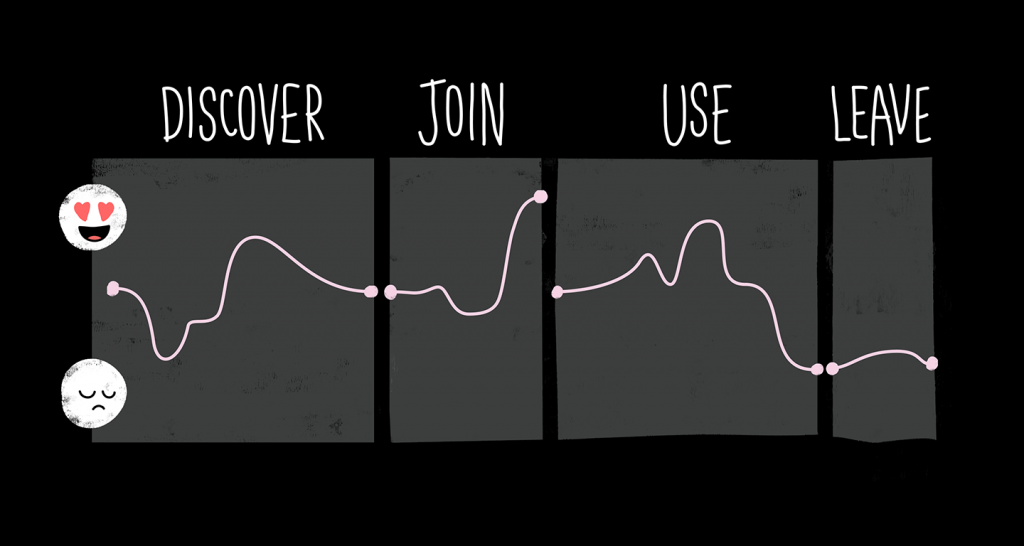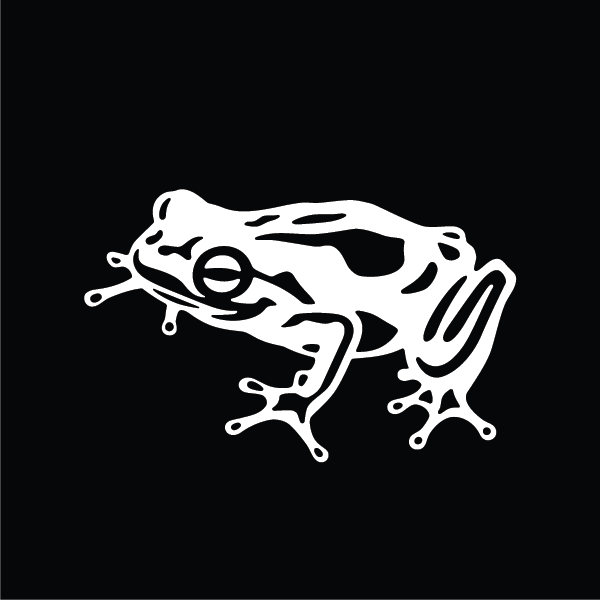
When creativity meets logic: how to bring brand into your service design projects
When designing services, we often focus on logic and process. It’s how we create useful and usable experiences. But we sometimes forget about brand – or treat it as a layer of polish.
All design is service design.
Michael Wolff — Founder and Brand Designer
We believe you can’t separate the brand from the service it offers. They’re intrinsically linked. So how can we close the divide that we sometimes feel on projects?
Here are 4 ways to strengthen the link between service and brand design.
In a recent project for a high street retailer, we wanted to define how a service for employees should look and feel. Having already done some super insightful user research, we knew this would be a perfect starting point. We revisited our interview notes and pulled out quotes from employees describing their emotions and memories of their time at the company.
We found a real sense of belonging amongst staff; they felt welcomed and valued as part of the team. We pinpointed ‘belonging’ and ‘welcoming’ as characteristics we wanted the service and its brand to communicate.
The best part about this approach? It gives the team a chance to capitalise on the work that others have already done. What if instead of spending a load more time doing more research, brand designers just stole from service designers? Work smart, not hard.
As Don Norman describes them, journey maps are a tool to “superimpose the emotional response of individuals as they go through their journey”.
Each of these emotional responses is a huge opportunity for brand. If there’s a point in the experience where people have told us they feel particularly happy, we can emphasise the brand to make that moment feel unique and memorable. Finding Signature Moments like these to amp up the brand help elevate a service from a utility to something distinctive and emotionally engaging.

Plotting the customer’s emotional response to a brand against the user journey.
You can also look at it from the other side; there are times when it’s better to take the brand out the way. If there’s a point in the experience where people feel worried or panicked, say they have an urgent issue they need help with, then it might not be the best time to dial up the brand.
Sometimes you just need to let people do what they need to do. If you’ve ever been to the toilet on a Virgin train, you’ll understand what I’m getting at.
As designers, we spend a lot of our time in user research sessions, testing if the service is as easy to use as possible. Or finding out if people will buy it. Brand doesn’t get much of a starring role.
But getting feedback on how the service looks, feels and sounds helps us make user-centred decisions on things like tone of voice, colour, typography, imagery and illustration. Decisions that would otherwise feel subjective – and tricky with a lot of stakeholders involved.
Don’t get me wrong, this isn’t about ignoring our client’s opinions on how the service should be branded. It’s about marrying their vision with the feelings of the people who will actually use it.
For your next user testing session, think about how you could add in some brand exercises. Are you making a service that customers will need to pay for? Try presenting three versions of the same service with identical features and prices, but give each version its own unique tone of voice and visual identity. By asking people what they’d pay for each service, you’ll get focussed feedback on the brand itself and a clear picture of exactly how the brand is influencing the service.
You might have read up to this point and thought: “this sounds too formulaic to be brand design.” I hear you. Sometimes process and logic can paralyse creativity. Sometimes we need to think with our hands.
We’re essentially dealing with chaos. And if you stop the chaos the creativity goes.
James Greenfield — Koto
Some of the most compelling brand ideas come when we have space to go slightly wild. This might mean getting time to fill a wall (or Figma file, as has been the case for the last few months) with visual inspiration to help shape how the service could look. Or scribbling some ideas for graphic devices, patterns or shapes that can be used in the service.
By letting designers loose on a blank canvas, free from constraints, and giving them time to explore how the service should look and feel, we unlock peoples’ creativity and they can make something truly unique.

Getting chaotically creative in Figma.
It’s all about connecting
I’d love to see more projects bring brand and service design together. By pulling together diverse teams of people who think differently, we can see new perspectives and create something truly greater than the sum of its parts.
Because at the end of the day, there’s one thing that connects brand design and service design. It’s people.
People are at the core of both disciplines. Service design is about solving people’s problems, brand design is about making a connection with people. By putting our clients’ end users at the centre of projects, we can create things that those people need and that form a genuine connection with them. This is how companies will make the most impactful, distinctive and engaging services possible.
Can you bring brand thinking to service design projects? Perhaps you tackle business problems with visual design? We’re growing our design team. Find our open opportunities here.

frog, part of Capgemini Invent is a global design and innovation firm. We transform businesses at scale by creating systems of brand, product and service that deliver a distinctly better experience. We strive to touch hearts and move markets. Our passion is to transform ideas into realities. We partner with clients to anticipate the future, evolve organizations and advance the human experience.
We respect your privacy
We use Cookies to improve your experience on our website. They help us to improve site performance, present you relevant advertising and enable you to share content in social media. You may accept all Cookies, or choose to manage them individually. You can change your settings at any time by clicking Cookie Settings available in the footer of every page. For more information related to the Cookies, please visit our Cookie Policy.